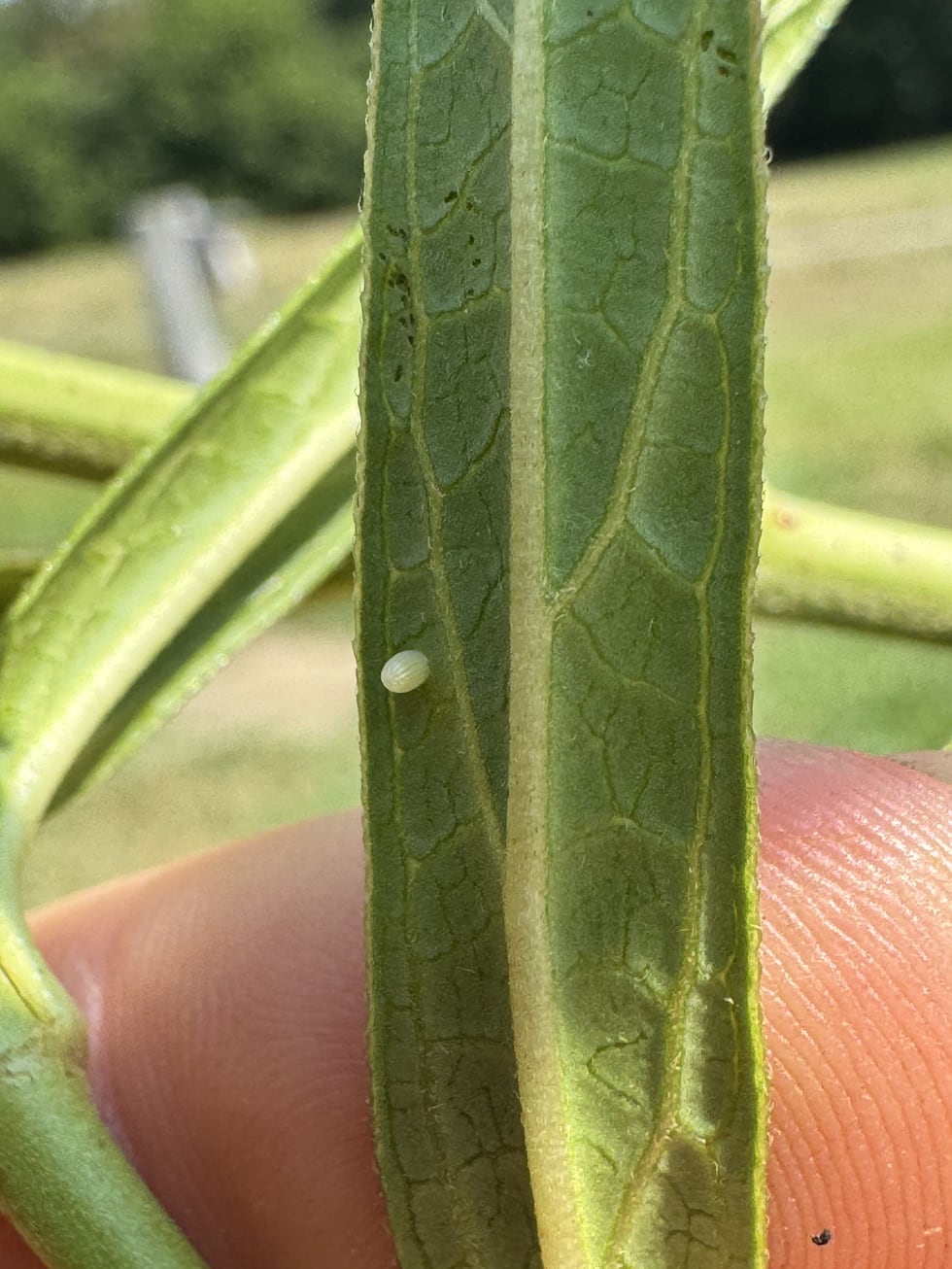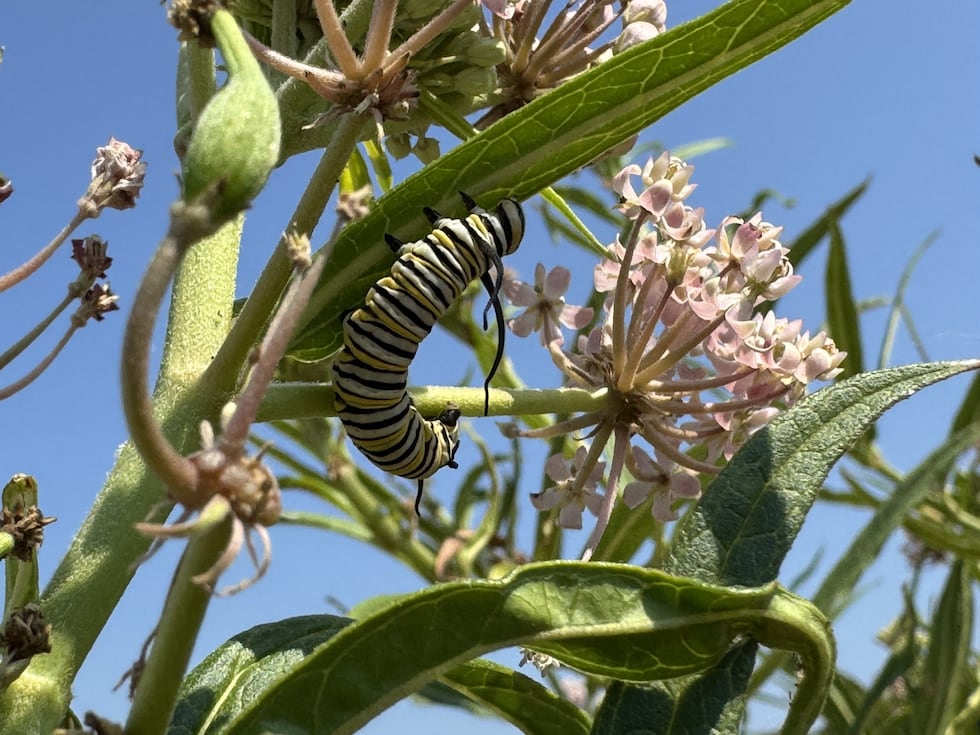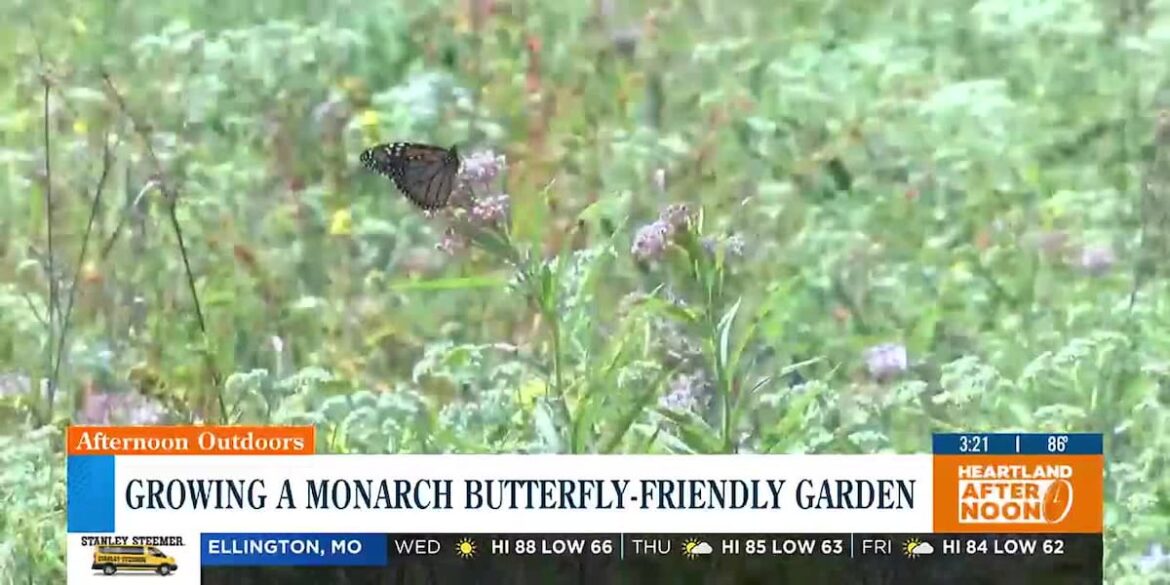CAPE GIRARDEAU COUNTY, Mo. (KFVS) – When many people think of a butterfly, they picture the iconic black and orange monarch.
The U.S. Fish and Wildlife Service is pushing to get monarch butterflies added to the endangered species list as their numbers drop.
People can provide these butterflies a sort of safe haven in their own yards by keeping a plant essential to the monarch’s life cycle.
Horticulturist Cassi Holcomb said milkweed plants are the monarch’s choice of host, and they grow well in the southeast Missouri area.
“You’ve got a lot of other species of plants around them that’s providing the nectar, but it’s that host plant that they lay their eggs on, and that’s the key because that’s what their larva will eat once the egg hatches,” Holcomb said.
 Monarch butterflies lay their eggs on milkweed plants.(Cassi Holcomb)
Monarch butterflies lay their eggs on milkweed plants.(Cassi Holcomb)
Holcomb’s favorite species of milkweed is the Swamp Milkweed, which she said smells like bubblegum.
 A monarch butterfly sits atop a Swamp Milkweed plant in Cape Girardeau County, Missouri.(KFVS)
A monarch butterfly sits atop a Swamp Milkweed plant in Cape Girardeau County, Missouri.(KFVS)
Holcomb said it is not difficult to keep a milkweed plant for monarch butterflies to use.
She recommended checking out a local nursery with native plants to find one.
“See what conditions you have in your space and which milkweed species would be the best for your planting conditions, and then plant other nectar species around that, like just other blooming plants.”
By choosing plants that bloom during different times of the year, Holcomb said people can extend the length of time their yard is butterfly-friendly from the summer into fall.
 Monarch butterfly caterpillars exclusively eat milkweed plant leaves, making them vital to the species’ life cycle.(Cassi Holcomb)
Monarch butterfly caterpillars exclusively eat milkweed plant leaves, making them vital to the species’ life cycle.(Cassi Holcomb)
Providing a place for monarchs to lay their eggs and a food source for their caterpillars not only helps the species, but the whole ecosystem.
“I just don’t wanna see a species go extinct, that’s happening already. Every time that happens, we’re losing a lot more than just that species, we’re losing all the things that they support.”
Holcomb said keeping a milkweed plant and encouraging the presence of butterflies is also an opportunity to bring education about nature to the household.
“The ones that you can plant in your space and actually monitor and watch and observe and show to children and others, it’s a joy.”
Holcomb said she is done this with her own children by bringing a monarch egg into her plant shop, allowing her family to observe the insect’s life cycle in real time.
Copyright 2025 KFVS. All rights reserved.


Comments are closed.